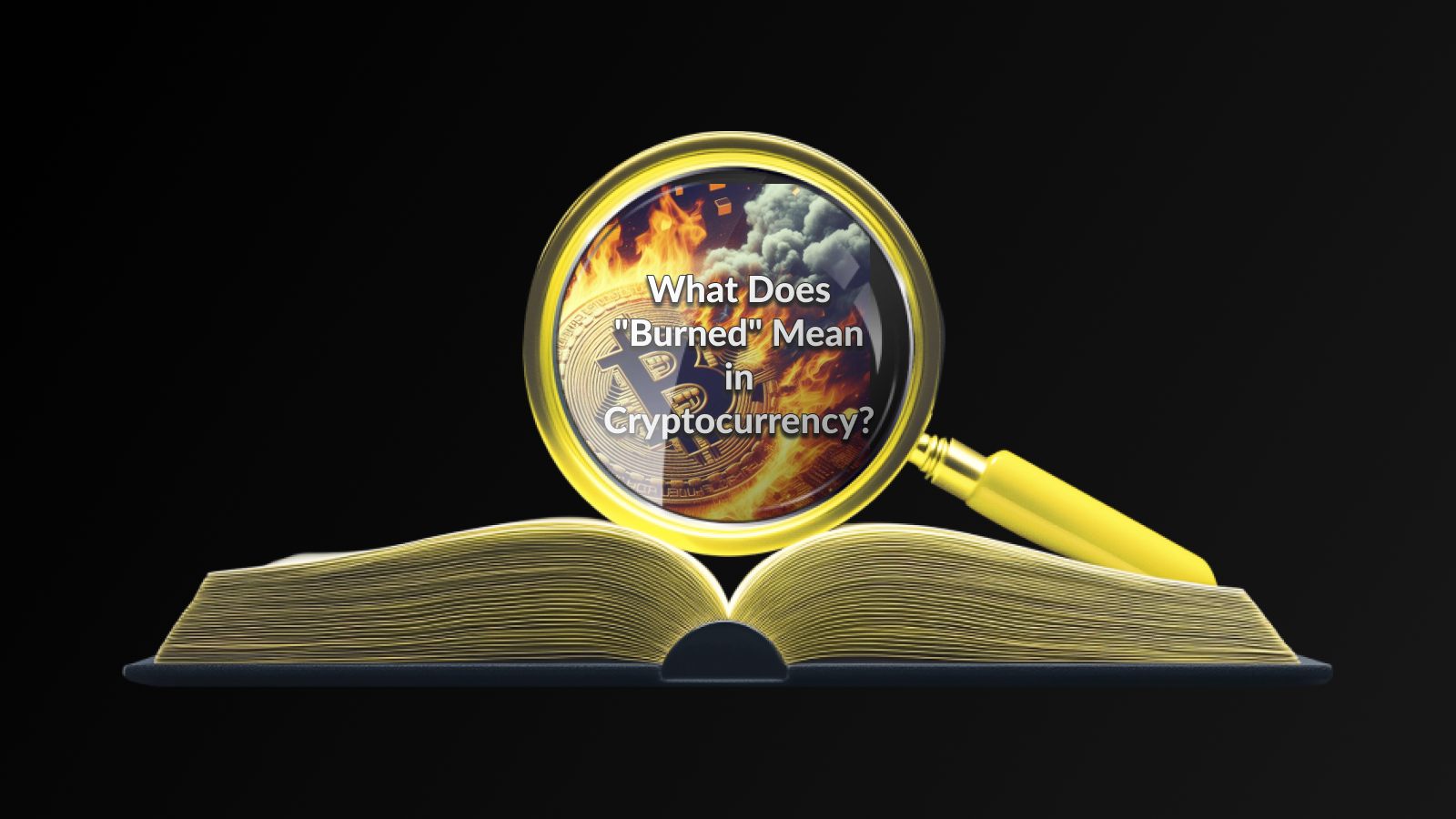Understanding Token Burning in Cryptocurrency
Token burning is a significant mechanism employed in the cryptocurrency landscape to manage token supply and foster scarcity. When we refer to tokens that have been burned in cryptocurrency, it means that a certain number of tokens have been intentionally destroyed or removed from circulation. This process is often executed to enhance the value of the remaining tokens by reducing the total supply.
The burning process can take various forms, such as sending tokens to an unspendable address, commonly referred to as a black hole. In this scenario, once the tokens are sent to that address, they become irretrievable, effectively taking them out of the market. This method of permanently removing tokens helps to create an artificial scarcity.
Many projects incorporate token burning into their economic models to incentivize investment and promote long-term holding among their community members. By burning tokens, these projects aim to increase demand while making their tokens more valuable over time.
Understanding how tokens are burned in cryptocurrency is crucial for investors and participants in the market. By grasping this concept, stakeholders can make informed decisions based on the potential effects of burning on token value and market dynamics.
Why Do Cryptocurrencies Burn Tokens?
Token burning is a strategic move adopted by various cryptocurrencies for several reasons, primarily aimed at enhancing the value and efficiency of their ecosystems. One of the main motivations behind this practice is to increase scarcity. By removing a portion of the circulating supply, the remaining tokens can potentially appreciate in value, benefiting holders in the long run. This economic principle is aligned with supply and demand dynamics, where fewer tokens available in the market can lead to higher valuations.
Another significant reason why cryptocurrencies engage in token burning is to boost user confidence in the project. When a project actively manages its token supply through burning, it showcases commitment to maintaining a healthy market environment, which can reassure investors and users alike. Furthermore, this process can be seen as a form of incentivizing engagement, where users are encouraged to participate in the network’s growth, knowing that their investments may appreciate as tokens are consistently burned.
Some cryptocurrency projects may burn tokens as part of their protocols or during specific events, such as a successful milestone, to reflect their performance and the growth of the ecosystem. This practice can reinforce the community’s trust in the project while effectively creating a cycle of positive reinforcement that benefits all participants.
How Are Tokens Burned?
Token burning is a process that involves removing a certain amount of cryptocurrency tokens from circulation. This is typically done to reduce the total supply of a cryptocurrency, thereby aiming to increase its scarcity and potentially its value. In the context of burned in cryptocurrency, various methods are employed to achieve this objective.
One common method is through the use of a smart contract, which automatically sends tokens to a designated wallet address known as a burn address. This address is often unspendable, meaning that the tokens sent there can never be used again. By transferring tokens to this wallet, the total supply increases, making the remaining tokens in circulation more valuable.
Another approach involves the cryptocurrency developers manually removing tokens from circulation using specific protocols. For example, some projects may implement scheduled or event-driven burns during particular milestones, such as reaching a target supply or accomplishing development goals.
Additionally, regular buybacks and burns can also be executed by the project team, where a portion of the tokens bought from the market is subsequently burned. This helps create a healthier market by driving demand and stabilizing prices.
Understanding how tokens are burned in cryptocurrency is crucial for recognizing the broader implications of this practice, particularly regarding supply dynamics and market performance. The consistent burning of tokens plays a significant role in maintaining the economic model of various cryptocurrencies and fostering long-term investment interest.
Notable Projects That Use Token Burning
Several cryptocurrency projects have implemented token burning as a strategic measure to enhance value and create scarcity. Below are some notable examples:
- Bitcoin (BTC) – While not a direct burning mechanism, the halving events in Bitcoin effectively reduce the rate at which new coins are introduced into the market, creating a deflationary effect comparable to burning.
- Binance Coin (BNB) – Binance conducts regular token burns as part of its commitment to reducing the total supply of BNB, which is utilized for transaction fees on its exchange.
- Ethereum (ETH) – With the introduction of EIP-1559, a portion of transaction fees in Ethereum is burned, further contributing to its deflationary nature post-Ethereum 2.0.
- Shiba Inu (SHIB) – The Shiba Inu community has engaged in multiple token burns to reduce the circulating supply, aimed at increasing the value of the remaining tokens.
- SafeMoon (SFM) – SafeMoon employs a unique tokenomics strategy where a percentage of tokens is burned with each transaction, incentivizing holding while actively reducing supply.
These projects demonstrate how token burning can be effectively integrated into various blockchain ecosystems, showcasing its potential influence on the economic dynamics of burned in cryptocurrency. By leveraging token burning, these platforms aim to optimize their market behavior and enhance investor confidence.
Advantages of Token Burning
Token burning offers several advantages that can significantly impact a cryptocurrency’s ecosystem. One of the primary benefits is the reduction of supply, which can lead to an increase in the token’s value over time. By permanently removing tokens from circulation, the remaining tokens become scarcer, which can drive demand and, consequently, price appreciation. This mechanism is particularly vital in enhancing investor confidence in the project.
Additionally, burned in cryptocurrency can help maintain network stability. By periodically burning tokens, the project can manage inflation and control the overall supply over time. This acts as a counterbalance to excessive token issuance, ensuring that the value is not diluted.
Another advantage of token burning is the potential to create and sustain a loyal community of supporters. When participants see a tangible effort to enhance the value of their holdings through token burns, it fosters trust and long-term commitment to the project. This sense of community can lead to increased user engagement and participation in the network, further solidifying the project’s foundation.
Moreover, some projects utilize token burning as a part of their reward mechanism. By integrating burns into the protocol’s operational model, users may receive incentives for their participation, whether through staking or transaction fees. This not only stimulates economic activity but also diversifies the use cases for the token.
The advantages of token burning play a crucial role in shaping the dynamic and sustainable growth of cryptocurrency projects. From increasing value and enhancing stability to forging community loyalty, burned in cryptocurrency serves multiple strategic purposes that benefit both the project and its investors.
Risks and Limitations
While token burning has its merits, there are notable risks and limitations associated with this practice in the cryptocurrency space. First, the burned in cryptocurrency process can potentially lead to reduced liquidity. When tokens are burned, they are permanently removed from circulation, which can make it harder for holders to sell their assets, especially in times of market volatility.
Additionally, the effectiveness of token burning as a price stabilization strategy can be ambiguous. Some projects may overestimate the impact of burning tokens, leading to disappointment among investors if the anticipated price increase does not materialize. This disconnect may foster a sense of mistrust within the community.
Moreover, the lack of regulations in the cryptocurrency market can complicate the legitimacy of burning mechanisms. Unscrupulous projects may exploit token burning to create artificial scarcity while avoiding transparency, resulting in increased risks for investors.
While burning tokens may seem beneficial in the short term, it can also hinder project development. If a significant portion of a cryptocurrency’s supply is systematically removed, it may limit available funds for future projects, marketing, and improvements, stunting growth in the long run.
Frequently Asked Questions
What does ‘burned’ mean in the context of cryptocurrency?
‘Burned’ refers to the process of permanently removing a certain amount of cryptocurrency from circulation, effectively reducing its total supply.
Why would a cryptocurrency choose to burn tokens?
Cryptocurrencies burn tokens to increase scarcity, potentially raise the value of the remaining tokens, and to demonstrate a commitment to maintaining or increasing user confidence.
How is cryptocurrency burned?
Tokens can be burned by sending them to a wallet address that is unspendable, commonly known as a ‘burn address’, which no one can access.
Are burned tokens recoverable?
No, burned tokens are permanently lost and cannot be recovered, as they are sent to an address that no longer has any control over the tokens.
Can burning tokens impact a cryptocurrency’s price?
Yes, burning tokens can impact a cryptocurrency’s price by creating scarcity and increasing demand among investors, potentially leading to a price increase.
Do all cryptocurrencies burn their tokens?
No, not all cryptocurrencies burn tokens; it is a strategic choice made by some blockchain projects to manage supply and influence market dynamics.
Is token burning a trend in the cryptocurrency market?
Yes, token burning has become a common practice in the cryptocurrency market as projects seek to enhance value and attract more investors.
Disclaimer
The information provided in this article about the concept of Burned in Cryptocurrency is for educational purposes only. It should not be considered as financial advice. Cryptocurrency investments can be highly volatile and unpredictable, and readers should conduct their own research before making any investment decisions.
Additionally, the practices and mechanisms surrounding token burning can vary significantly across different blockchain projects. Thus, understanding the specific context of each project is crucial before forming any opinions or making investments.
Please note that while token burning can offer potential advantages, such as increased scarcity, it also comes with inherent risks. In some instances, reduced supply does not guarantee increased value, making it important for investors to consider all aspects of their cryptocurrency portfolios.
The cryptocurrency landscape is ever evolving. Regulations and technologies may change, influencing how token burning and other mechanisms operate. Stay informed and aware of any updates that could impact your investments.





